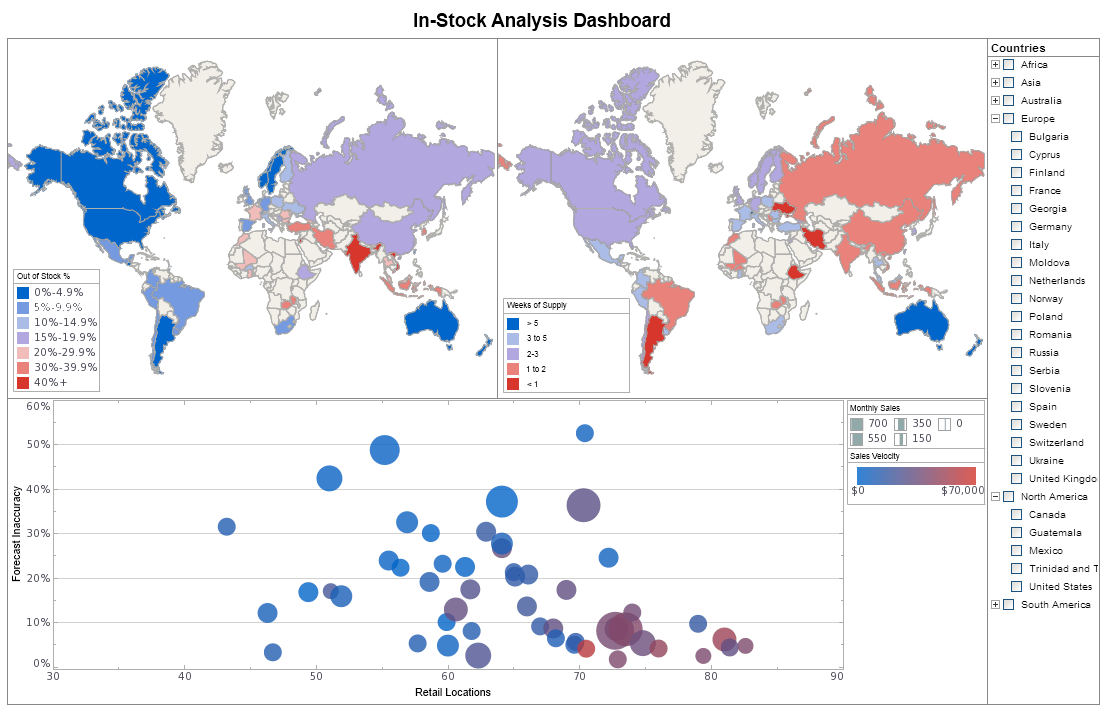InetSoft Webinar: Agile BI Best Practices
This is the transcript of a Webinar hosted by InetSoft on the topic of "Agile BI Best Practices" The speaker is Mark Flaherty, CMO at InetSoft.
In preparation for this webinar on agile BI, we did quite a bit of research read various industry reports, talked to customers, and read many blogs. The idea for this webinar was generated because our customers have been asking us a lot about agile BI, mobile BI, all these topics that are out there.
It seems this is one of the most discussed topics these days, and we certainly heart that from our clients, but there remains a lot of confusion as to what exactly it is and today we have synthesized the research. There are several aspects of agile software design that kept coming up.
Some thought agile BI referred to applying agile principles, and there are a bunch of agile development principles applicable to BI environments, things like scrum, extreme Programming, and so forth. Well, others thought that it should mean the ability of BI to help an organization become more adaptable, especially to the needs of the end-user.
I have seen agile BI applied in two ways. The first is getting BI implemented in an agile manner through iterations. As a user, I may not know exactly what might be useful to me, so giving me some versions and we can fine-tune them as we are going along is important. And we see this, because it's hard to understand the data until you see it and then you realize what you want to look at. Then you make changes to this first draft of the dashboard or report because it's not exactly what you thought it was going to be. So having a development environment where it's easy to show people something, change it quickly, be very flexible and dynamic is really important.
Then there is the other side of this, which is called self-service BI. The business intelligence application, itself, is agile. The user can interact with it and change it, and we would say muck around in the data or reflect the current performance as close to real-time as possible. For example, what was our POS data as of last night, summarized by region, zones, and the country? I would add to this the ability to slice through it, explore it, do ad hoc analysis to it. So there are a couple of different things going on here.
I think that that gives a really good synopsis of what’s the discussion around this topic of agile BI right now. We always like to learn more about our attendees on the webinar, so we are going to launch a quick survey. This survey question is, are you currently implementing an agile BI strategy in your organization? Just a quick yes or no.
So what people are answering it, this is buzz, there is a variety of different viewpoints. They are captured in different ways. We kind of synthesize this into these two totally different vantage points. One is the technical side which we are going to talk about for a few minutes here. The other is the end-user side which we will come back in a little bit. And the supporting the agile manifesto are specific practices like scrum and extreme programming or any variations which help put the principle of the manifesto in practice.
Scrum and extreme programming are development techniques, and we use them here in our software development. They are different from the way software and systems were developed back 5 or 10 years ago, and it's much more about setting short deadlines, getting little pieces completed and then combining them instead of what used to happen when you would do one major release in a year.
The goal here is to set timeframes like four to six weeks and develop code by small pieces. And expanding that point further, I would add being agile enough to adapt to the changing data sources and structures. And I think we all have seen with social networking and e-mail, all the marketing channels, there are a lot more data types coming that weren't there a few years ago and being able adapt to that, especially in a BI setting, is key.


